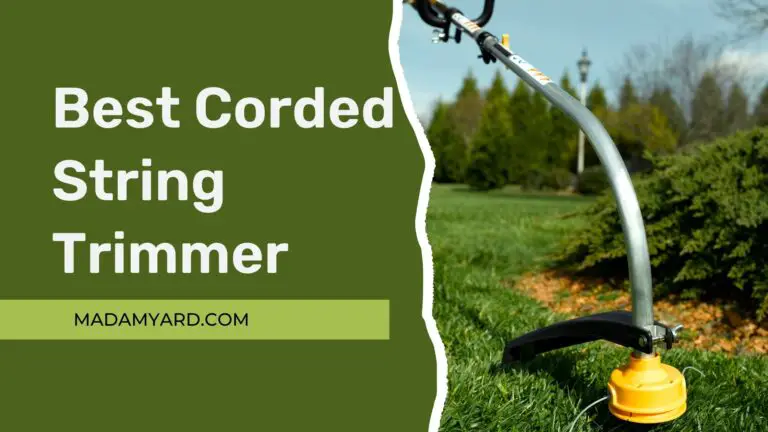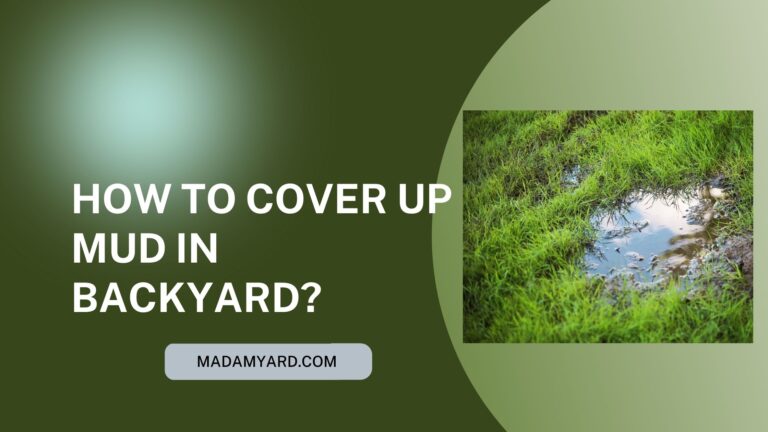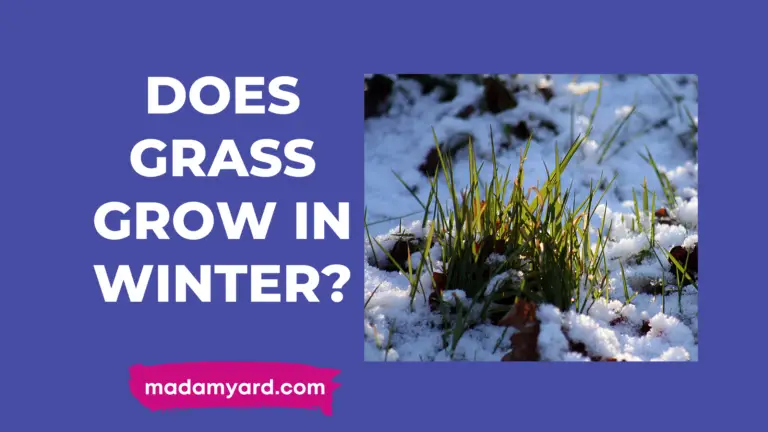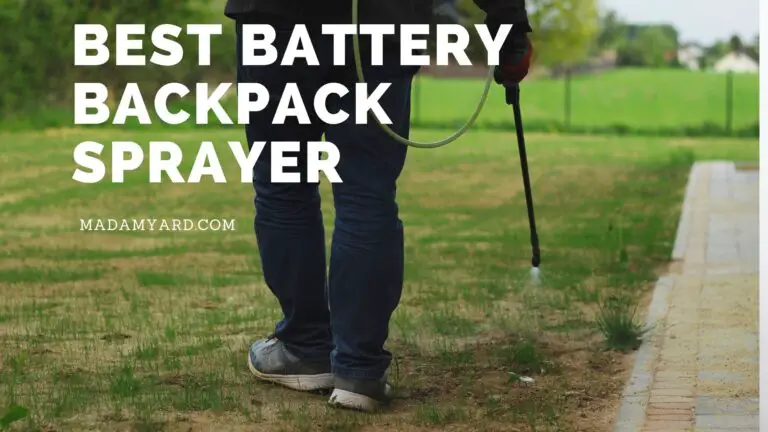Holes In Lawn: Causes & How To Get Rid?
Many factors might be generating holes in lawn. The typical suspects are animals, youngsters at play, decaying roots, floods, and irrigation issues. Insects, invertebrates, and burrowing rodents are the most common causes of small holes in yards.
Larger holes, on the whole, have more disastrous causes, and the source must be found and the problem fixed.
Lawn And Garden Holes
When it comes to spotting holes, size is essential, but placement. Small rodents, such as voles or moles, or insects, are frequently responsible for holes in the garden.
A pile of earth covers a mole hole, while a vole hole does not. Birds dig holes in sod to find food, while earthworms aerate the soil and give air to their tunnels by making small holes the size of pencils.
Some wasps and other insects lay their eggs in the sod, resulting in holes. Excavation of tiny holes in yards to discover whether eggs or a tunnel might be advantageous.
It will provide you with additional information to help you determine what course of action to take next.
What Cause Holes In My Lawn?
Holes in grass or yard occur in a variety of sizes and forms. Little holes indicate the presence of small animals and, thus, small lawn damage. Large holes in the grass, on the other hand, might be caused by large creatures such as moles, squirrels, or dogs, and the damage is a fact.
Consider the time of day it happened, the season, and the size of the holes to prohibit animals from digging holes in your yard successfully. After transitioning from larva to adult, most insects become active and produce holes on their way from the earth to the surface.
Some animals make holes in the ground for nesting, while others dig holes in the earth to get at underneath prey. To provide a long-term remedy, consider the following explanations for holes in your lawn.
Moles
By digging massive holes in your grass, moles make a huge mess. They dig such holes while following grubs, worms, and other soil-dwelling invertebrates.
You can be sure you have moles in your lawn if you see holes with a 10-inch diameter and conical mounds.
However, don’t mix up moles with voles. The feet and boy of moles are bigger than those of voles, and they also have darker fur and hairless noses.
Moles, unlike voles, dig deeper holes and can dig up to 10 inches deeper into the earth. Outside the entry locations of the holes they formed, they also leave volcano-like mounds.
Yes, getting rid of moles is exceedingly tough because they only arrive at night, but you must do everything you can to avoid them. Otherwise, they’ll do a lot of harm to your grass.
You may use castor oil to discourage moles from your lawn, one of several mole avoidance tactics. Some successful traps are also effective.
Small Earthworm Holes
Earthworms are segmented, tube-shaped worms with no legs that may be found in any healthy yard’s soil. They are beneficial to the soil because they aerate the grass by digging small holes and turning over the dirt to feed.
If your yard has a large population of earthworms, you may see many little holes in your grass with tiny heaps of granular dirt pellets. These little holes will often be seen at the top of the soil mound.
When the soil is moist and the temperature is warm, earthworm holes are prevalent in the spring and fall seasons, when the soil is moist, and the temperature is warm enough for increased earthworm activity.
Pocket Gophers
Pocket gopher infestations are sometimes mistaken for moles, but it’s crucial to know the difference. Because the Pocket Gopher is a threatened species with dwindling habitats, only attempts to diminish or eliminate its presence in your yard should be considered.
Unlike the Mole, the Pocket Gopher is strictly herbivorous and will eat roots and bulbs they come upon when digging.
Tunneling may happen at any time of year, although spring and fall are the most common. They’re also known for nibbling on leaves and stems along borders, such as walkways or the yard’s boundary.
The tunnels are distinguished by large crescent or fan-shaped dirt mounds with a hole sealed with the earth that serves as an entrance and exit.
It suggests the presence of complex tunnels under the surface that can better irrigate the land while reducing runoff.
Voles
First and foremost, voles are not moles. Like field-mice, voles have light grey-brown hair and tiny ears and eyes. They’re a little stockier and have a shorter tail than mice, making them simpler to see.
Voles, like moles, dig shallow, snake-like tunnels that are about two inches broad. Voles, on the other hand, devour vegetation. Therefore you may observe damaged grass, plants, flowers, fruits, or vegetables in the vicinity of a vole hole.
These tunnel-digging scavengers are most active in the spring, so keep a lookout for them at the start of the year.
Wasps
Scoliid wasps and Cicada-Killer wasps both eat holes in your lawn. The Scoliid wasps work together to excavate holes for grubs.
They start by locating and killing the grub. Later, they deposit eggs on the grubs to guarantee that the baby wasps have a food supply when they hatch.
Cicada killer wasps are more likely to be digging if your yard has short grass.
To safeguard their sustenance, Cicada-Killer wasps build tunnels. They dig deep tunnels to locate their prey and haul it to the surface.
Don’t trim your lawn grass too short if you’re sure a killer wasp is present.
Digger Bees
Andrenid bees, halictid bees, and colletid bees are among the little hairy or metallic bees that burrow in the earth to build their nests. These are solitary bees that are essential pollinators in their native habitat.
In contrast to more social honeybees, where only the queen reproduces, the female builds a cylindrical subterranean tube that serves as a nest where she reproduces. The female creates “bee-bread,” a nectar and pollen combination.
Because they play a crucial role as pollinators in their habitat, coexistence rather than elimination strongly advocates wherever feasible.
The danger of getting stung by digger bees often exaggerates, and they are more bothersome than hazardous to the homeowner.
Control is typically not required unless the bees are breeding in an area that is more likely to be disturbed by human activities.
Squirrels And Chipmunks
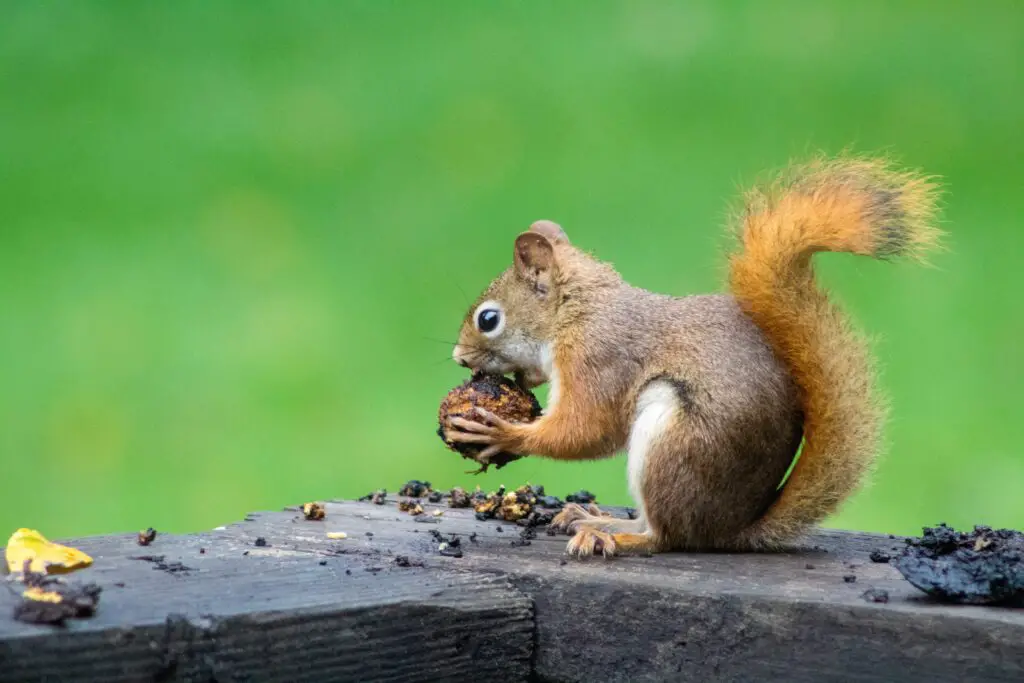
Squirrels in the yard may identify by the sudden emergence of small holes all over the lawn. To save nuts for later use, these little mice dig up and bury them in the yard.
Eastern grey squirrels are the main culprits in your lawn’s holes. There is no mound of earth surrounding the holes, which are usually shallow and tiny.
Squirrels may dig up small holes in your grass to access the tubers and eat on them if you have nutsedge weed.
On the other hand, Chipmunks dig little caves and tunnels in the yard to protect themselves from predators. Chipmunk holes can be found around log piles, stumps, and buildings in your yard.
Birds
Birds get up early in the morning to seek worms, grubs, and other invertebrates that live in the grass.
While little flying birds are unlikely to cause significant harm to your grass, big birds can rip it up in their quest for grubs.
Birds’ small, irregular holes should not give you a headache. Birds can assist in the biological management of insect populations in our gardens.
Armadillos
Armadillos might be another source of small holes in your grass that emerge overnight. If you have these creatures in your region, this might be true.
Because armadillos eat tiny invertebrates such as grubs and insects such as ants and termites, they will dig shallow holes in your grass to get their meal.
Checking for ants or grubs in your grass is one technique to see if this is the main source of small round holes in your lawn.
- Ants in the grass may dig small holes in the lawn and form mounds (ant hills).
- Grubs devour your grass’ roots, resulting in uneven brown areas of dead grass.
- These signs, together with holes in the grass, might suggest that armadillos are in the area, causing damage to the lawn by digging up the turf to eat insects.
Snake Holes
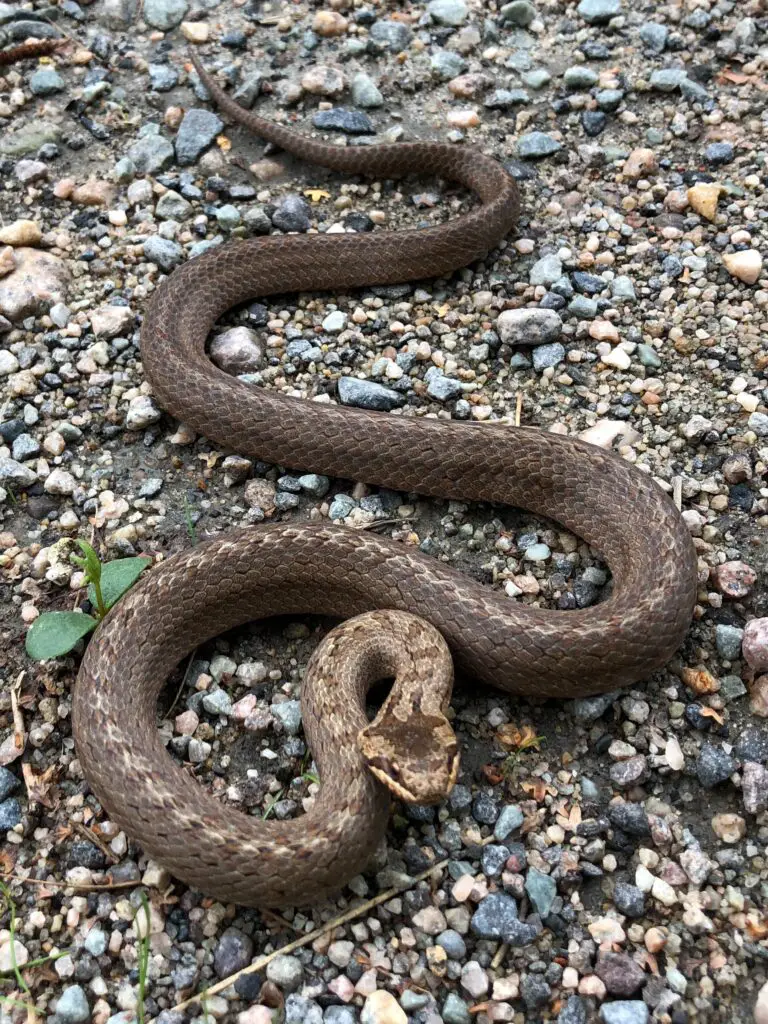
Your lawn may feature snake holes in addition to holes made by vertebrate yard pests like rats and moles. They usually drill holes in a circular pattern.
You could also observe snakeskin that has been shed around those openings.
Snakes don’t always dig tunnels for themselves, and other animals and insects, such as gophers, may have dug tunnels for them.
Beetles
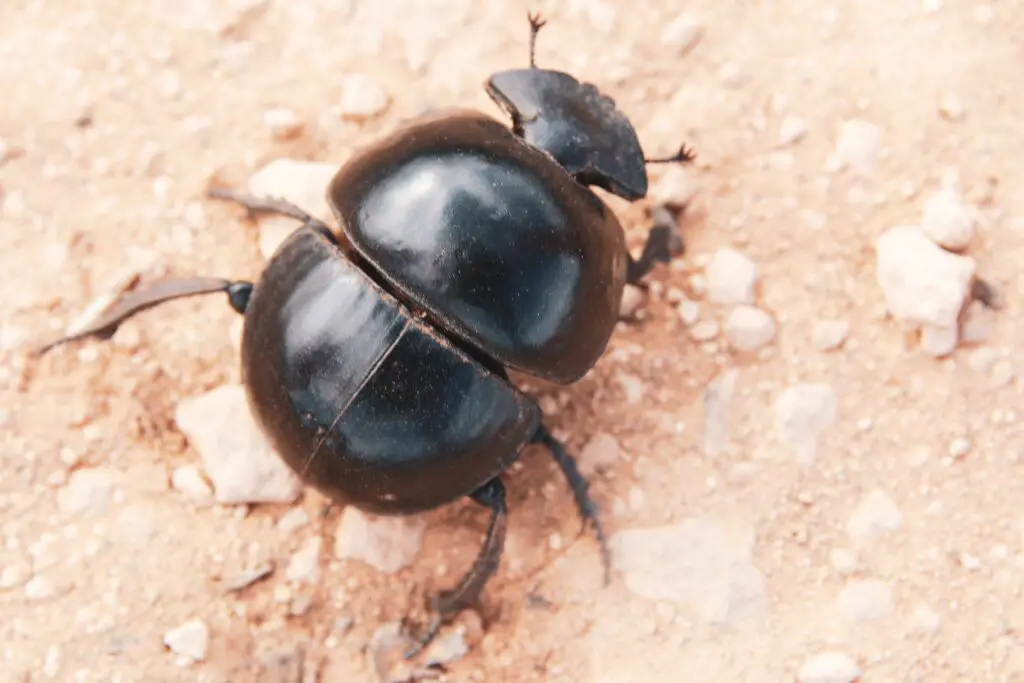
Every gardener’s biggest fear is Japanese beetles. The insects lay and bury their eggs in the soil, which develop into grub-like larvae.
The grubs hide under the earth over the winter and early fall while they progress into the next stage.
Grubs have evolved into beetles and are beginning to emerge to the ground in the spring and early summer; this is when you will see small holes in lawn overnight.
Grub damage in lawns may be seen during the larval stage when actively eating on the grassroots.
In most cases, grubs exacerbate the problems in your yard. If you want to keep your green, lush grass, grubs must be controlled, especially when they are in huge numbers.
How To Fill The Small Overnight Holes?
Now that we’ve figured out what’s creating the holes, it’s time to figure out how to patch them. The method you choose will be determined by the number of holes and their size.
If you’re merely filling one or two holes that a dog or youngster may have dug, acquire some dirt or topsoil and physically place it in the hole.
To make it firm, press it down firmly before walking on it. After that, rake the leftover soil into the cracks all over your grass.
The holes can be huge in certain situations, and this may cause harm to your lawn.
The first step in this procedure is to pry the underwater grass up with a flat shovel, then use the shovel to cut the hollow sections into square 1-foot square sods.
After that, you’ll need to replace the grass sods and fill up the holes with new dirt before pushing down on them with your foot or a roller.
If this doesn’t work or the damage is too severe, we understand that this is upsetting and not what you want to hear, but it’s time to consider starting over and re-establishing your lawn.
It will necessitate you to start with insect management before tearing up the rest of the grass. After that, you’ll have to plant fresh grass or lay new sod.
Conclusion
After reading this article, we hope that you will no longer be terrified of waking up to find holes in lawn and will be more than prepared to deal with them.
Yes, discovering holes is never a good indication and typically implies that you’ll have to deal with a pest problem. Still, if you follow our easy procedures, you’ll be able to glance out your window and see that beautiful green grass in no time.
If you discover the source, act promptly, and follow our instructions, you should be able to get rid of the holes on your own; but, don’t be scared to start over because it may be more beneficial in the long run, and if the issue is beyond your abilities, always call a pest control firm.


